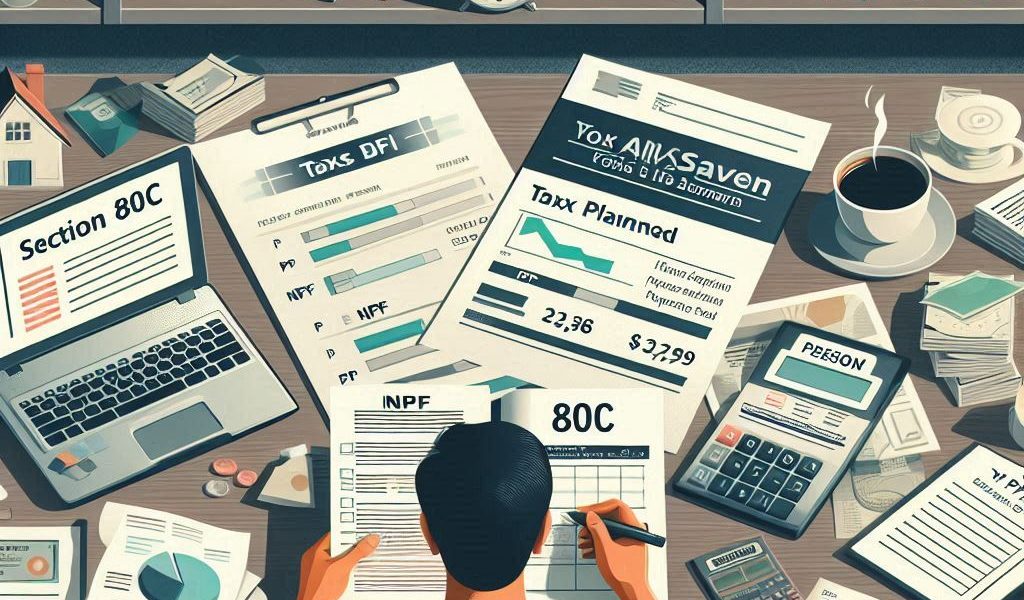Tax-saving is an important part of financial planning, and Section 80C of the Income Tax Act is one of the most popular sections for reducing your taxable income. It provides individuals with a range of investment options that not only help you save taxes but also create wealth over the long term.
In this guide, we will walk you through how to use Section 80C effectively, highlight the various tax-saving instruments under this section, and explain how they can benefit you. By leveraging Section 80C, you can reduce your overall tax burden and build a stronger financial foundation.
What is Section 80C?
Section 80C allows taxpayers to claim deductions on various investments and expenses, up to a maximum of ₹1.5 lakh in a financial year. This means that for every ₹1.5 lakh you invest or incur eligible expenses, you can reduce your taxable income by the same amount, thereby lowering your tax liability.
The total deduction limit of ₹1.5 lakh is applicable to individuals, Hindu Undivided Families (HUFs), and taxpayers who qualify under this section. The most significant advantage of Section 80C is that it encourages long-term savings and investments by offering a range of options to invest in.
Popular Investments and Expenses Under Section 80C
Here’s a list of some of the most popular investment options and expenses that qualify for tax deductions under Section 80C:
1. Employee Provident Fund (EPF)
The Employee Provident Fund (EPF) is one of the most common retirement savings schemes in India. Both employees and employers contribute to EPF, and the employee’s contribution is eligible for a deduction under Section 80C.
Benefits:
- The contribution made towards EPF is eligible for tax deduction up to ₹1.5 lakh.
- The interest earned on EPF is tax-free.
- Withdrawals after a specific period (usually after 5 years) are tax-free.
How it helps: Regular contributions to EPF not only reduce your taxable income but also help you build a significant retirement fund with tax-free returns.
2. Public Provident Fund (PPF)
The Public Provident Fund (PPF) is another excellent investment vehicle for tax savings. PPF offers a long-term, government-backed savings option with attractive interest rates.
Benefits:
- Contributions to PPF are eligible for tax deduction under Section 80C, up to ₹1.5 lakh per year.
- The interest earned on PPF is tax-free.
- The maturity amount is also tax-free, making it one of the best options for long-term savings.
How it helps: PPF is ideal for individuals looking for a low-risk, tax-saving investment with guaranteed returns.
3. National Savings Certificates (NSC)
The National Savings Certificate (NSC) is a government-backed savings instrument that offers tax deductions under Section 80C.
Benefits:
- The principal investment made in NSC is eligible for tax deductions under Section 80C.
- The interest earned is taxable, but it is reinvested annually and qualifies for tax deduction.
- The maturity amount is tax-free.
How it helps: NSC offers a guaranteed return with a fixed tenure of 5 or 10 years, making it a good option for conservative investors.
4. Tax-Saving Fixed Deposits (FDs)
Tax-saving fixed deposits are similar to regular fixed deposits but come with a lock-in period of 5 years. They qualify for deductions under Section 80C.
Benefits:
- Investments in tax-saving FDs are eligible for a tax deduction of up to ₹1.5 lakh.
- The interest earned on these FDs is taxable, but they offer a secure and fixed return.
How it helps: Tax-saving FDs are ideal for individuals seeking low-risk, fixed-income investment options with a tax-saving benefit.
5. Life Insurance Premiums
Premiums paid towards life insurance policies for yourself, your spouse, or your children qualify for a deduction under Section 80C.
Benefits:
- The premium amount paid for life insurance policies is deductible under Section 80C.
- The death benefits received are tax-free under Section 10(10D).
- Investment in life insurance also ensures financial protection for your loved ones.
How it helps: Life insurance policies offer both tax savings and financial security for your family in case of unforeseen events.
6. National Pension Scheme (NPS)
The National Pension Scheme (NPS) offers an additional tax deduction under Section 80C for contributions made towards your pension account.
Benefits:
- Contributions to NPS up to ₹1.5 lakh qualify for tax deduction under Section 80C.
- Additional tax benefits of up to ₹50,000 can be claimed under Section 80CCD(1B).
- NPS allows you to build a retirement corpus with tax benefits while enjoying market-linked returns.
How it helps: NPS is an excellent option for individuals looking to invest for retirement while benefiting from tax savings.
7. Tuition Fees for Children’s Education
Under Section 80C, you can also claim deductions for tuition fees paid for the education of your children (maximum of two children).
Benefits:
- Tuition fees paid to a recognized school, college, university, or educational institution qualify for a deduction under Section 80C.
- The deduction is available only for full-time education.
How it helps: This benefit is ideal for parents looking to save on taxes while supporting their children’s education.
8. Home Loan Repayment (Principal Amount)
If you have taken a home loan, the principal repayment qualifies for a tax deduction under Section 80C.
Benefits:
- The principal repayment of a home loan is eligible for tax deduction under Section 80C, up to ₹1.5 lakh.
- This benefit is available for self-occupied and rented properties.
How it helps: Home loan repayment can be an effective way to reduce your taxable income while investing in property.
Strategies to Maximize Your Section 80C Benefits
Here are some strategies to make the most of Section 80C and maximize your tax savings:
1. Invest the Full ₹1.5 Lakh Limit
Make sure to utilize the full ₹1.5 lakh limit under Section 80C by investing in a combination of tax-saving instruments like PPF, NSC, life insurance premiums, and EPF. Diversifying your investments helps reduce risk and boosts long-term returns.
2. Opt for Long-Term Investments
Long-term investments such as PPF and EPF not only provide tax benefits but also help you build a sizable retirement corpus. These instruments offer tax-free returns and are less vulnerable to market fluctuations.
3. Focus on Risk Management
While tax-saving is important, it’s equally vital to consider the risk profile of your investments. Mix low-risk options like PPF and EPF with higher-risk options such as NPS and tax-saving FDs to strike a balance.
Conclusion: Start Early to Maximize Tax Savings
Section 80C offers a great opportunity to save taxes and build wealth for the future. By investing in tax-saving instruments such as PPF, EPF, life insurance premiums, and NSC, you can reduce your taxable income and benefit from long-term growth.




